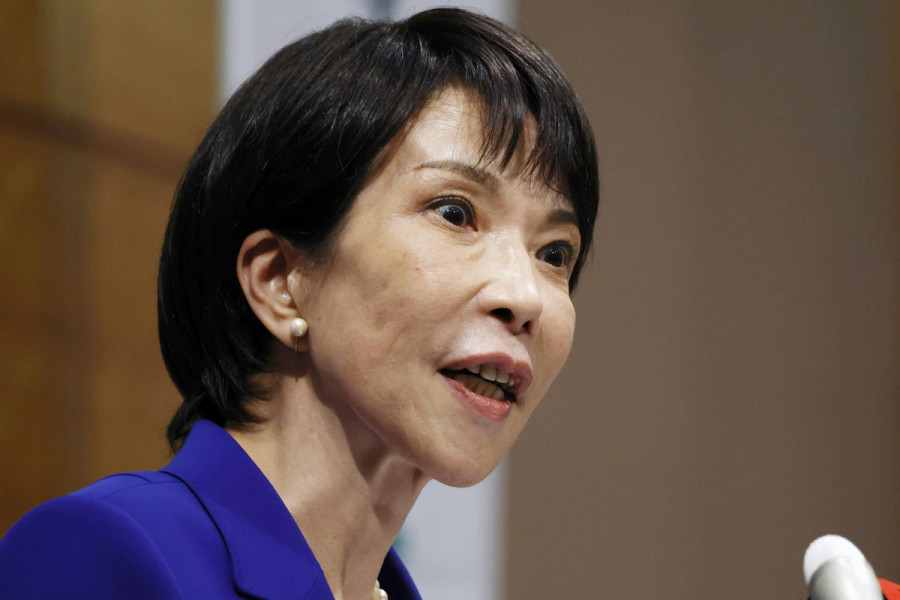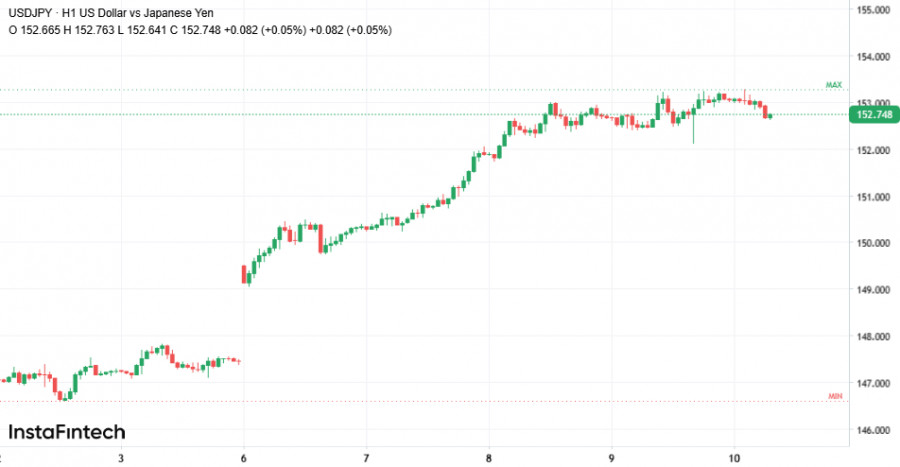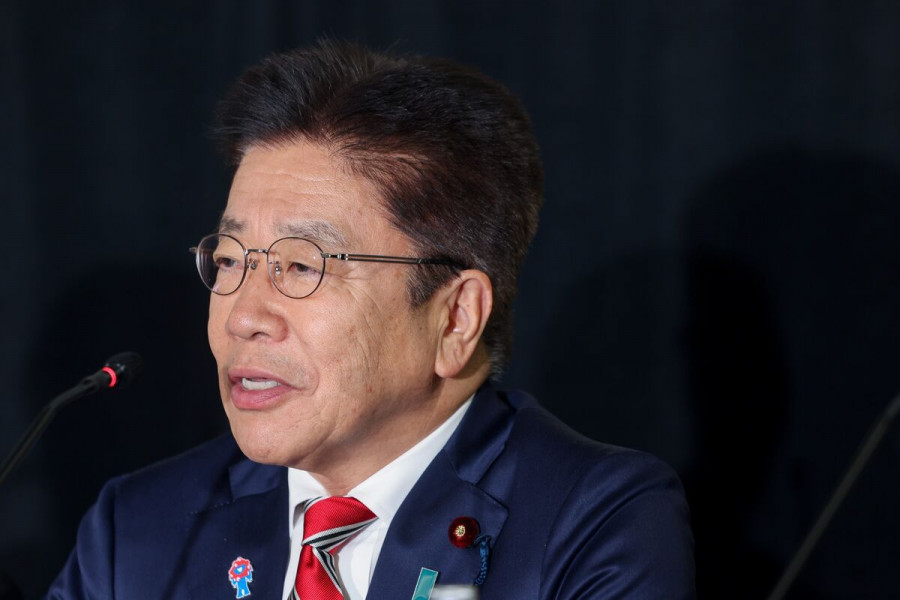On Thursday evening, the new leader of Japan's ruling party, Sanae Takaichi, attempted to reassure markets that she is not aiming for a weaker yen and that the Bank of Japan's policy would remain balanced. However, investors heard something else entirely. Following her remarks, the yen briefly strengthened but then resumed its downward trajectory, hitting new lows. Why did the words of the next prime minister fall flat? Where are the Ministry of Finance's limits of patience, and what does this mean for traders? Let us break it down.
When words fall short: markets did not buy Takaichi's message
On Thursday night, Sanae Takaichi made her first televised appearance since winning the leadership race of Japan's ruling party. Markets waited anxiously for her to clarify her stance on monetary policy. Her words, however, provided little relief for the yen—more like a brief gasp of air before another plunge.
Takaichi stated that she had no intention of provoking excessive yen weakness but noted that, based on real-world experience, a weak yen has both advantages and disadvantages. She added that a weaker currency could act as a buffer for Japanese exporters, particularly in the context of global trade risks.
She also emphasized that while the central bank is responsible for setting monetary policy, any decisions should be aligned with the government's objectives.
The market, however, interpreted her tone not as cautiousness but as evasion. Following her comments, the yen momentarily strengthened from 153.22 to 152.14 per USD, but the effect quickly faded. By Friday morning, the rate had dropped to 153.27, marking an eight-month low. Investors interpreted Takaichi's speech as a political balancing act rather than a show of policy resolve.
"Markets continue to believe that Takaichi's leadership will politically constrain the Bank of Japan from raising interest rates," Carol Kong, a currency strategist at Commonwealth Bank of Australia, said. According to her, the new leader's remarks only reinforced expectations that policy tightening this year remains unlikely.
A similar view was expressed by Yusuke Miyairi, FX strategist at Nomura: "The market had previously assumed that Takaichi had softened her dovish stance. In fact, these were simply verbal interventions." Her public statements were seen as an attempt to appear moderate, rather than signaling any upcoming actions.
Skepticism was also fueled by context: Takaichi is a known protege of Shinzo Abe and a supporter of stimulus policies. Just a year ago, she called potential rate hikes "foolish." Now, although she dismissed the comment with a laugh, she declined to repeat it, stating that the issue should no longer be raised and acknowledging that she was not in a position to comment on rate hikes.
Such caution only deepened concerns that the Bank of Japan will avoid making significant moves in the coming months. Markets now estimate a 45% probability of a rate hike in December and a 100% probability of a 25-basis-point hike by March. But for now, all signs point to no changes in December.
For the yen, this means one thing: the door remains open for further depreciation. Following Takaichi's leadership win, the yen has dropped almost 4% against the dollar in just one week—its sharpest weekly decline since October of last year. Markets interpreted her comments as a clear signal that the new government is not aiming for a strong yen.
Intervention on horizon: Japan's authorities step up rhetoric
Friday morning brought not just fresh yen lows but a heightened level of concern in Tokyo. As markets digested Takaichi's remarks, Japan's Ministry of Finance was forced to step in due to the accelerating fall of the currency.
Almost immediately after breaching the 153 level per US dollar, Finance Minister Katsunobu Kato addressed the media with considerably stronger language than that used a day earlier by the incoming prime minister.
"We have been recently seeing one-sided and sharp moves," Finance Minister Shunichi Kato said. "The government will thoroughly monitor for excessive fluctuations and disorderly movements in the forex market." This marked perhaps the most direct verbal intervention from Japanese authorities in recent months—and it came across as a signal that patience is beginning to wear thin.
According to analysts, Kato's rhetoric reflected growing concern within the government about the potential need for intervention. Market strategists noted that the finance minister's firmer tone reinforced expectations that Japan might be moving one step closer to a currency intervention. Nonetheless, many experts emphasize that direct intervention remains unlikely unless the exchange rate edges closer to 160 yen per dollar.
That level is seen by many in the market as a key psychological threshold. Authorities won't mind as long as the yen's declines are moderate. Their alarm bells will start ringing if market players begin talking about the chance of sharp yen declines toward 160 or 170 per dollar," Takeuchi told Reuters in an interview. "If the yen falls that much, authorities could and must step in. In his view, interventions cannot reverse global trends, but they can help pause a rapid depreciation of the yen.
The yen is currently under dual pressure—from political uncertainty and the continuing interest rate differential between the US and Japan. Following Takaichi's leadership win, investors began pricing in a delay in any Bank of Japan rate hikes and expectations for the policy to remain loose. As a result, Japanese bond yields rose, while the currency continued to weaken.
Kato is evidently trying to strike a balance between economic logic and political reality. He stressed that exchange rate fluctuations have both positive and negative impacts and that it is important for currency movements to reflect economic fundamentals and remain stable. While this type of language is standard among Japanese officials ahead of potential action, it served as a clear warning to the market: further depreciation would be unwelcome.
Since 2022, Japan has already spent about £24.5 trillion (approximately $160 billion) on currency interventions. Although neither Kato nor the Bank of Japan has confirmed readiness for new action, the tone has become notably tougher. Political context is also intensifying the pressure: Takaichi has not yet secured a solid coalition with the Komeito party, limiting her maneuvering room and adding to market nervousness.
"Finance Minister Kato's recent comments on the FX markets indicate imminent FX intervention is unlikely, which may encourage markets to further sell the yen," Carol Kong of the Commonwealth Bank of Australia noted. In other words, markets currently believe that Tokyo will not intervene anytime soon—which in itself may invite further testing of the limits.
Takeuchi summarized Japan's dilemma with characteristic restraint: "If the yen falls that much, authorities could and must step in." For now, however, he added that the government appears willing to tolerate moderate depreciation while watching the exchange rate slowly approach the psychologically significant 160 level.
Trading strategies: how to trade in weak-yen environment
After a volatile week marked by Takaichi's public remarks and a sharp yen sell-off, traders face a difficult question: continue betting on further weakness, or act cautiously in anticipation of government intervention?
1. Long positions on USD/JPY.
The core strategy remains intact: investors are going long on the pair, expecting continued pressure on the yen. The wide interest rate gap between the U.S. and Japan (around 3%) keeps the U.S. dollar attractive, supporting this approach.
2. Short-term trades amid intraday fluctuaions.
Following Takaichi's comments and the yen's subsequent decline, the market showed that short-term bounces are possible but temporary. Traders can benefit from playing within the 152.0–154.0 range, using tight stop-losses.
3. Monitor fundamental indicators.
It has become increasingly important to follow inflation prints, bond yield movements, and any statements from the Bank of Japan or Finance Ministry. Any outlier reading or policy shift may intensify currency pressure or spark a sudden revaluation.
4. Diversify and exercise caution.
A weak yen presents both opportunity and risk. Although further declines seem likely, the approach to the 160 level may trigger a decisive reaction from authorities. Traders are advised to diversify exposure and avoid overconcentration to mitigate the risk of sharp reversals.
Conclusion for traders: The trend against the yen remains in place, but its pace and amplitude will depend heavily on the interplay between global macroeconomic conditions and political messaging in Japan. Betting on continued weakening remains reasonable, but readiness for sudden market shifts—especially intervention signals—is essential.















